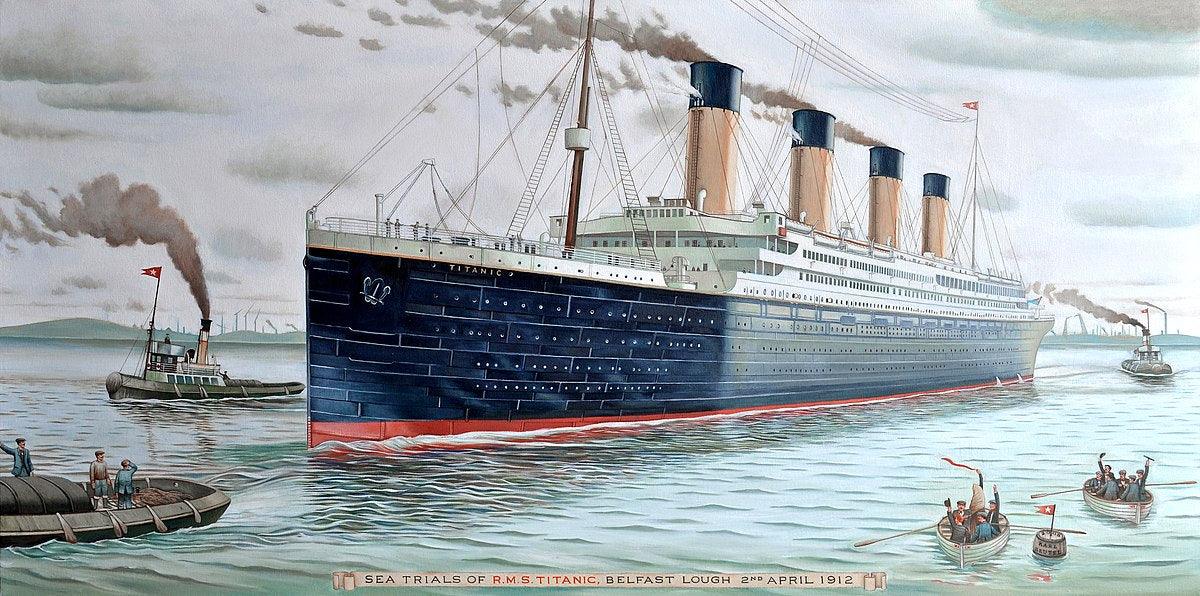
Today, April 12, Anniversary of Beatles Song "With love, from me to you," and More!!!

April 12th, 1877 is the anniversary of the British Annexation of the province of Transvaal, as part of a larger colonial effort spurred in great part by the discovery of gold and diamonds in South Africa.

The rich deposits changed the fashion of diamonds in the world by bringing them into mainstream-common fashion, as diamonds now became more affordable to the masses. That growing popularity continues to rise, more than a century and half later, especially in romantic jewelry pieces. However mining diamonds is often a socially, politically, culturally, ethically and environmentally disruptive practice (See above right, the Big Hole at Kimberly South Africa, where the SA diamond rush began). Lab-grown diamonds, which are the same as natural diamonds in every way but their origin, alleviate many of these problems.
Since they were first produced in the 50’s, advances in Lab grown diamond production have left those early dirty stones behind. We now produce astonishingly beautiful gem quality diamonds of larger and larger carat sizes, and better clarity and color; industrial diamonds harder and stronger than their natural counterparts, as well as diamonds with specific thermal and electromagnetic properties making them increasingly sought after for technological & medical equipment, lenses and screens. (See below the scalpel made from diamond, courtesy of Lookandlearn.com)

So in memory of the April 12,1964 debut of the Beatles song “From Me To You,” here’s how the Lab-grown diamond you’ll use to say “With love, from me to you,” is produced today.
Diamonds are carbon crystals that form under immense heat and pressure, as much as, or even more than 150 miles below the surface of the Earth. They shoot up to the surface in massive and violent volcanic upheavals called kimberlites and lamproites. As far as we know, no human has ever witnessed such eruptions, which are among the most destructive of all volcanic eruptions. White most magma moves at speeds measurable in feet per hour or at most feet per minute, kimberlite magma can reach speeds of 400 meters p er second, or 12,00 feet per second, which is, wait for it… about 800 miles per hour. So essentially the speed of sound. Through solid rock…
er second, or 12,00 feet per second, which is, wait for it… about 800 miles per hour. So essentially the speed of sound. Through solid rock…
Aren’t you glad they don’t happen in your neighborhood!
While many take millions of years to form, it has been estimated that some diamonds form in a matter of minutes as super pressurized and heated carbon material is shot to the surface. Check our blog Alchemist Dream for more information on the science that led to modern Lab-grown diamond production.

High Pressure High Temperature is the oldest model for laboratory diamond production and still the most common method used . HPHT is based on the same theories as the original production models, and works in similar fashion to replicate the heat and pressure under which diamonds form naturally. (see the above diagram)
The first presses used by the US and Swedish scientists, and later soviet and japanese scientists, were large, expensive and inefficient, but by the 70’s developments were allowing for industrial diamond production on a commercial scale, and during the 70’s gem quality HPHT diamonds were finally synthesized, again by GE. However it was another 30 years before scientists were able to learn how to remove the many inclusions that were still present, and improve the color quality.
Since then machines have become more efficient and today an HPHT diamond “growhouse” may have hundreds of machines that each produce a carat per week at a meaningful percentage of the cost it takes to mine the equivalent.
While Chemical Vapor Deposition saw its development begin shortly after HPHT had been developed, it was a much longer time before CVD processes were honed to produce gem quality stones.

Originally used to make a thin diamond coating over another material, CVD is a process that does not replicate how diamonds naturally form on earth. Instead, a carbon rich gas is superheated and trapped in a container under pressure, in which a tiny piece of already formed diamond acts as a seed. The carbon atoms in the gas attach themselves to the seed diamond, and the diamond crystal grows. If you ever made rock candy as a kid, it’s a similar enough process.
Today CVD development has led to development of diamonds not only of industrial and gem quality but also with electromagnetic and conductive properties making them capable of being used in various forms of technology. Diamonds developed in these processes are still diamonds -carbon crystals in a tetrahedral atomic structure. All diamonds are great electrical insulators, semiconductors and thermal conductors, but most diamonds formed naturally are too expensive and are formed too irregularly to be used en mass for technological purposes.
Because we control the conditions under which they form in a lab, we can grow diamonds whose naturally conductive and insulating properties are uninhibited, at costs that make them more and more available for a variety of purposes. Expect everything from computer chips to surgeon scalpels to computer screens to be made from lab-grown diamonds in the future.
The advantages of lab-grown diamonds are numerous and increase every year. More and more are being produced in carbon neutral methods, and now technology using a combination of renewable energy and carbon drawn directly from the atmosphere will produce diamonds that are carbon negative. The yield for all shapes but round on Lab-grown diamond is higher per cut than for mined diamonds. As a result, the cost per carat is less, since less stone is wasted in the cutting and polishing process. While there was a dearth of colored lab-grown diamonds, and they currently have some inconsistencies in supply and quality, expect their rarity to evaporate by the end of the decade or sooner.
And that’s with love, from us at Michael Gabriels, to you.

(Picture courtesy of Flickr)



